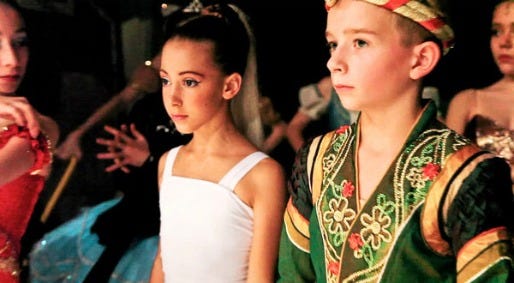First Position

There's a story in The Onion entitled "Dancer Risks Everything," which sets up the well-worn cliches of every dance film: sacrifice, breaking all the rules, one chance to change the course of a life. "First Position" has all of these and more; the documentary's subjects are young, and several embody child prodigy stereotypes as well. But Bess Kargman's documentary takes these cliches, adds the high stakes of a world-renowned youth ballet competition and turns the whole product into a documentary film as rewarding as "Hoosiers." Only with tights.
Each year, the Youth America Grand Prix takes place in New York City. Essentially the Olympics of the ballet world, it puts hopefuls ages 9 to 18 through rigorous semifinals worldwide. A select few among younger competitors will receive exposure, and the older competitors receive scholarships to prestigious ballet academies and job contracts for companies. Five minutes on stage can alter the course of a dancer's life; there's no room for error or injury. And considering a professional ballet career ends, at best, at 35 years old and companies aren't hiring like they used to, it's a race against time.
Each of the six dancers profiled in "First Position" is battling different obstacles. Joan Sebastian lives independently in Queens, far from his family in Colombia who are supportive of his ballet dreams and all too aware of the limited career prospects. Popular suburban high school senior Rebecca enjoys a "normal," comfortable life but can't stop overthinking her choreography, which could severely harm her chances at a professional career. Growing up in war-torn Sierra Leone, Michaela was adopted by a Philadelphia family and flourished as a dancer. But a pulled tendon could end her career for good, and besides, she and her mother have repeatedly been told "black girls can't be ballerinas."
Though beautifully filmed and thoughtfully scored, "First Position's" biggest strength is its young subjects. Their grand motivations and extreme sacrifices for art are sometimes adorably precocious (preteen Aran skateboards through the halls of his Rome dance studio), other times confounding (the mother of siblings Miko and Jules appears more involved in her children's careers than her children), and always compelling. The children and teens are genuine in their ambition and dedication, all too aware that competition is fierce, awards are few and one stumble could cost a much-needed scholarship or job. Kargman's attention to detail, pace and the individuality of each dancer displays a reverence for the art of ballet — where a lovely extension, a gravity-defying leap or a playful expression can leave a lifelong mark.



